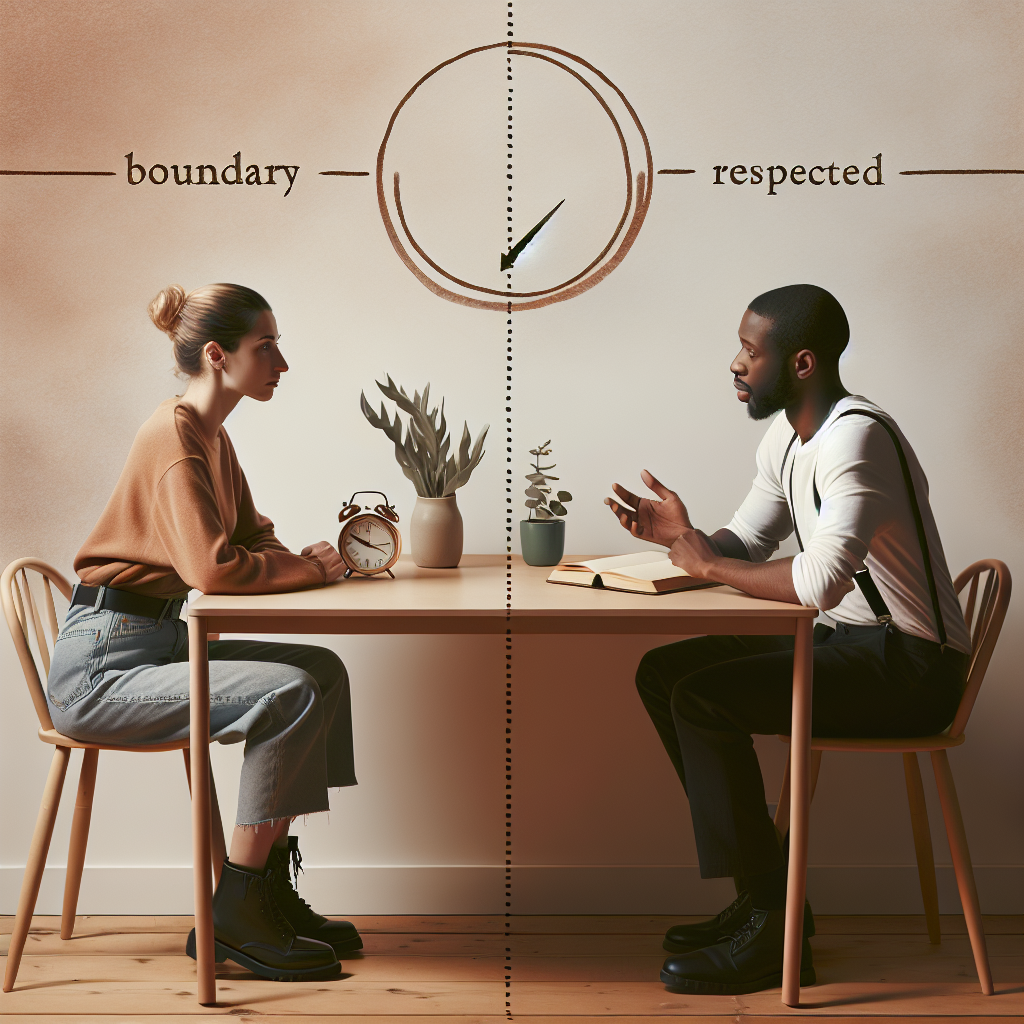How to Protect Your Energy and Strengthen Relationships
Let’s be honest: have you ever said “yes” to something you didn’t want to do, only to feel drained or resentful later? Maybe you agreed to help a friend move on a Saturday when you really just wanted to relax at home. Boundaries are like invisible shields that protect your time, energy, and emotions—but many of us struggle to set them. The good news? Boundaries aren’t about being selfish; they’re about respecting yourself and others. Let’s break down how to create them.

Why Boundaries Matter
Boundaries are essential for maintaining healthy relationships and personal well-being. They serve as rules that outline how you want to be treated, ensuring balance in your life. Without boundaries, you might experience the following:
- Feeling overwhelmed by others’ demands
(For example, becoming the go-to person for every last-minute favor.) - Burning out from trying to please everyone
(Think about juggling work and family obligations, leaving no time for yourself.) - Resenting people who don’t ‘notice’ your unspoken needs
(Like that friend who always asks for help but never offers any in return.)
Healthy boundaries foster mutual respect. For instance, telling a friend, “I can’t chat after 9 PM because I need downtime,” shows that you value both the relationship and your well-being. It’s like saying, “I care about our connection, but I also care about myself.”
How to Set Boundaries (Without Guilt)
Setting boundaries may feel uncomfortable at first, but it gets easier with practice. Here’s how to start:
1. Know Your Limits
Take time to identify what drains your energy or causes stress. Reflect on these questions:
- When do I feel most anxious, tired, or resentful?
- Are there specific situations or behaviors that leave me feeling exhausted?
For example, you might realize that responding to late-night work emails disrupts your sleep or that constantly listening to a friend’s complaints makes you feel emotionally drained. Recognizing these stressors clarifies where boundaries are needed.
2. Communicate Clearly
When you’ve identified a boundary, express it with kindness and confidence. Avoid over-explaining—brevity often works best. Examples of clear communication include:
- For work-life balance:
“I’m unavailable after 6 PM but can address this tomorrow.” - For financial boundaries:
“I can’t lend money, but I’d be happy to help you brainstorm other solutions.”
Remember, clarity reduces misunderstandings. Saying “no” confidently at a family gathering, for instance, communicates your boundary without inviting excessive debate.
3. Start Small
If the thought of setting boundaries feels overwhelming, begin with low-stakes situations:
- Silence phone notifications after work hours.
- Politely decline social invitations when you’re feeling run-down.
These smaller victories build your confidence for more significant boundary-setting scenarios later.
What If Someone Pushes Back?
It’s natural to encounter resistance, especially if others are accustomed to you always saying “yes.” Here’s how to handle it gracefully:
- Stay calm and repeat your boundary
Example: “I understand, but I still can’t commit to that.” - Remember you’re not responsible for others’ reactions
Example: If a friend gets upset because you can’t join their plans, remind yourself that prioritizing your well-being is okay. - Reevaluate and adjust as needed
Boundaries aren’t set in stone. If something isn’t working—for instance, if a group chat is draining you—modify it to better suit your needs.
The Role of Mindfulness in Setting Boundaries
Mindfulness practices can be an excellent tool for understanding your emotional responses when boundaries are crossed. Techniques like journaling, meditation, or even mindful walks in nature allow you to process emotions and reinforce self-awareness. This strengthens your ability to set boundaries calmly and thoughtfully.
How Boundaries Improve Relationships
Contrary to popular belief, boundaries don’t push people away—they foster connection through trust and mutual respect. Consider these positive effects:
- Improved communication: Clear boundaries reduce misunderstandings, making relationships more harmonious.
- Healthier dynamics: By respecting your needs, others learn to appreciate your time and energy.
- Reduced resentment: When you prioritize self-care, you show up as your best self for loved ones.
Resources for Further Learning
If you want to explore this topic in more depth, here are some excellent books:
- Set Boundaries, Find Peace by Nedra Tawwab – A guide to practical and effective boundary-setting.
- Daring Greatly by Brené Brown – Insights on vulnerability, self-worth, and creating meaningful connections.
- The Gifts of Imperfection by Brené Brown – A focus on self-acceptance and living authentically.
Final Thoughts
Boundaries aren’t about creating walls; they’re about establishing a safe and respectful space for yourself and others. It’s okay to start imperfectly—every small step counts. Remember, self-care isn’t selfish. By protecting your energy, you enhance your ability to nurture the relationships that matter most.
Take it one boundary at a time—you’ve got this!